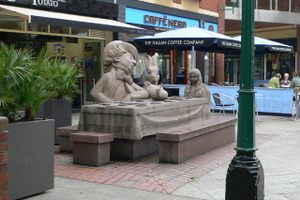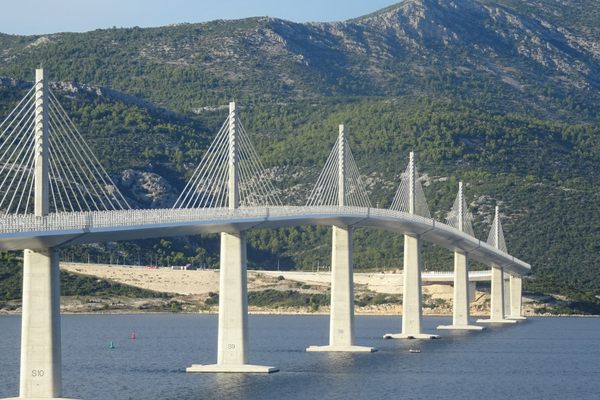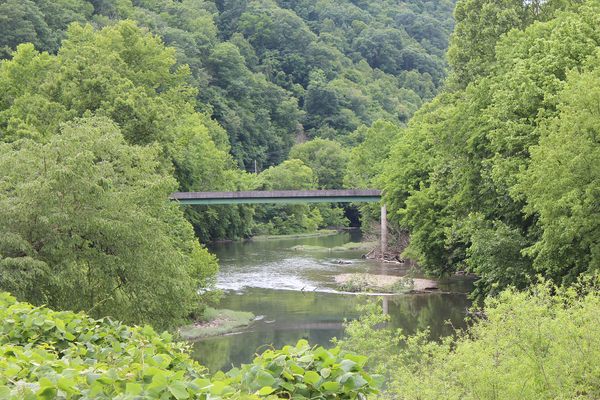About
Transporter bridges are rather unusual bridges. They don't have an elevated road or walkway crossing over a river, chasm, or any other obstacle. Instead, transporter bridges use a moving platform suspended under a boom to transfer people, vehicles, or other things from one end of the bridge to the other. They are usually built in locations where a normal bridge may not be functional for various reasons. For example, a drawbridge may not be practical in some locations with ship traffic, or if not enough space is available on either side of a riverbank for approach ramps leading to a standard road bridge, a transporter bridge might be a more practical alternative.
Transporter bridges are also relatively rare. The United Kingdom currently has only three transporter bridges designed to carry vehicles, and the Warrington Transporter Bridge is one of them. The bridge was constructed in 1916 to connect two different parts of the chemical and soap plant operated by Joseph Crosfield & Sons. (This bridge was actually the second one built in Warrington over the River Mersey; the first bridge was built in 1905 but was later demolished in the 1960s.)
The steel bridge, which spans a section of the river that is 61 meters wide, has a height of 23 meters and a total length of 103 meters. The bridge was originally used to transport railway vehicles from one side of the river to the other but was later modified in the 1940s to transport road vehicles.
The bridge ceased to be used in 1964. It became a listed structure in 1975, which protected the bridge from demolition, but the bridge has been slowly decaying since. However, the people of Warrington are very proud of their bridge, and a group named the Friends of Warrington Transporter Bridge (FoWTB) formed in 2015 to raise awareness about the bridge as well as to work with Warrington Borough Council to try to restore the structure.
The Warrington Transporter Bridge may still be non-functional, but it has become one of the defining symbols of Warrington.
Related Tags
Know Before You Go
As indicated above, the bridge is not functional, but it is possible to reach the bridge by walking along the footpath on the east side of the River Mersey to the east end of the bridge. Note that the footpath is not wheelchair accessible. Detailed instructions are given on the FoWTB website, but brief descriptions of how to reach the bridge are given below.
The north end of the path can be accessed from near Old Liverpool Road. The exact starting point is at the south end of a side road named Quay Fold that leads across rail tracks into an industrial area. (Gates may block the road across the rail track, but pedestrians can cross through a pair of side gates if needed.) This part of the path, which leads to the east (or left) from the railroad crossing, goes through an active industrial area, and pedestrians are instructed to stay on the path or, in some locations, to follow the green line for both safety and security reasons. When leaving the industrial estate, the path will be unpaved, but the bridge will be in full view.
The other route to the bridge is from the south. The river can be reached via an unnamed road that connects to Slutchers Lane just south of Wilson Patten Street. The unnamed road passes by both an indoor go kart track and the RSPCA Warrington Animal Centre before eventually terminates in a gravel-covered car park. A dirt path from that car park passes through the trees to the banks of the River Mersey, where it then connects with the riverside path that leads north underneath a road bridge to the Warrington Transporter Bridge.
Note that giant hogweed grows along the river, especially in the area near the bridge and to the south of the bridge. These invasive plants, which can be recognized by their height (reaching up to 3 m) and by their crowns of white flowers, are highly dangerous. The sap in these plants causes photodermatitis when it makes contact with human skin; the skin becomes very sensitive to sunlight and will blister or scar very easily. People walking to the bridge should stay away from these plants. Between the months of March and September, FoWTB strongly recommend using the northern route from Old Liverpool Road to access the bridge.
Community Contributors
Added By
Published
June 21, 2023
Sources
- https://www.nationaltransporttrust.org.uk/heritage-sites/heritage-detail/bank-quay-transporter-bridge-warrington
- https://historicengland.org.uk/listing/the-list/list-entry/1139433
- https://www.erih.net/i-want-to-go-there/site/warrington-transporter-bridge
- http://www.warringtontransporterbridge.co.uk/
























